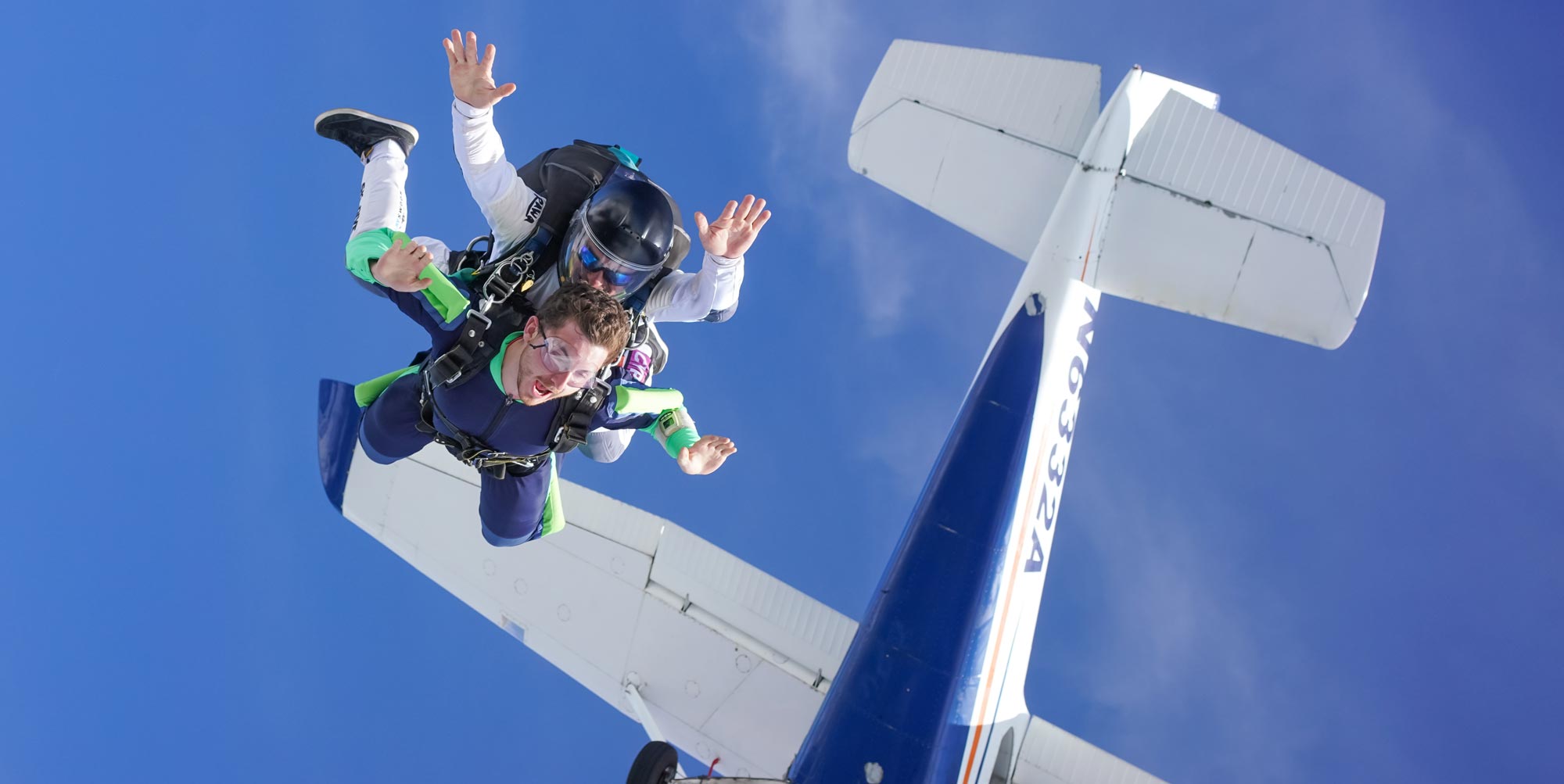Can You Do a Skydive in the Rain?
Skydiving
Posted by: Long Island Skydiving Center 4 years ago
If the forecast is looking a bit drismal (a portmanteau of dreary and dismal with just a splash of drizzle), you might be wondering what it means for your skydive. Afterall, can you even skydive in the rain? Skydiving weather is a finicky thing, but we hope to clear up any questions you might have. Let’s start with the basics.
Can you skydive in the rain?
Skydiving in the rain is not allowed. The Federal Aviation Administration (FAA) requires that skydives only be completed in Visual Flight Rules conditions. Simply put, you need to be able to see as you fly (or skydive).
In order to skydive, the rule of thumb is that there need to be blue skies free of clouds or other obstructions up to jump altitude. As you’ve probably noticed by now, very rarely are there blue skies when it is raining. Typically if rain is on the horizon, the clouds will be quite dense. Thick clouds impede Visual Flight Rules. Overall, for our safety, we do not skydive in the rain or through clouds because we need to be able to see the plane, other skydivers, and the landing area below.
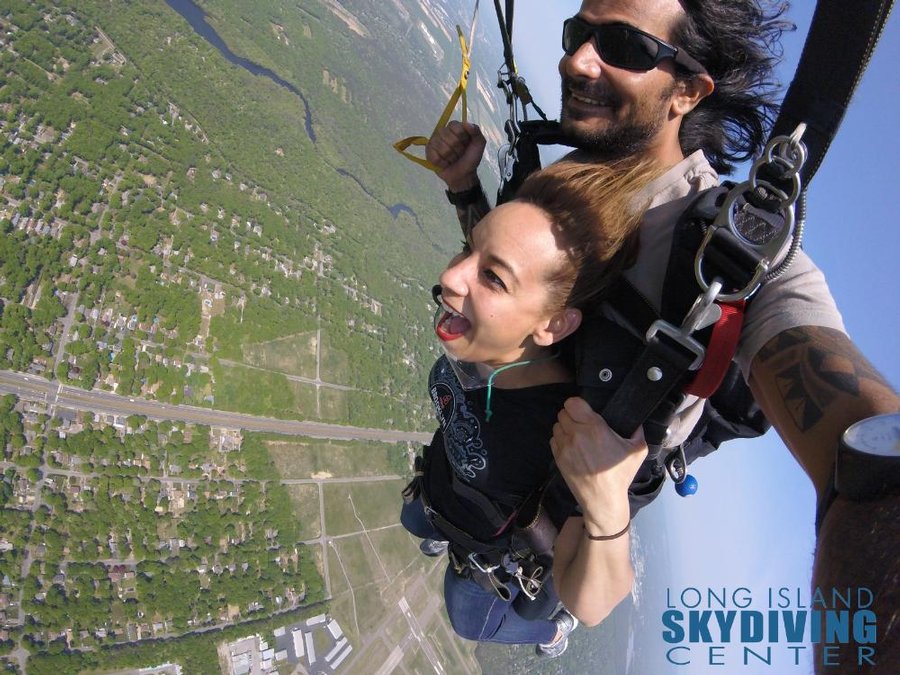
Aside from FAA regulations regarding skydiving in the rain, there are several other important reasons skydiving in the rain is a no-go. Namely, skydiving gear is not waterproof, or really, even all that water resistant. The costly electronic components of skydiving equipment can become ruined if exposed to enough water.
Furthermore, skydiving parachutes were not made to function in the rain. Though it can still fly, a wet skydiving parachute cannot fly efficiently and many of the flight characteristics are greatly affected. For example, the stall speed of the parachute is lower and rather than a crisp glide ratio the canopy has diminished flight dynamics. Finally, a very wet skydiving parachute cannot produce an effective flare, meaning the chances of a nice, soft landing becomes very unlikely.
Another dangerous and, often, unseen aspect to take into consideration when discussing skydiving in the rain is that when there is rain, there are often unpredictable winds. Nearly every skydiver loves a nice steady wind, but wind gusts? No, not so much. Gusts of wind can cause parachutes to become unstable and affect the safety of the canopy pilot. Needless to say, this simply isn’t the type of adventure we want to share with our customers.
What can you do?
Whether appearing all together or separately, rain, clouds, and wind can put the kibosh on skydiving. No one can control the weather, but there is something you can do to increase the likelihood you’ll be able to skydive even if the forecast is less than ideal.
We advise our customers to schedule early in the day. If there is inclement weather, we are happy and willing to wait all day for conditions to improve in order to share the adventure of a lifetime with you. But here’s the deal, when the weather improves, we start with the students who booked the earliest appointments and then work our way down the list. So, the earlier you schedule, the fewer customers that will be ahead of you and the fewer delays you will experience!
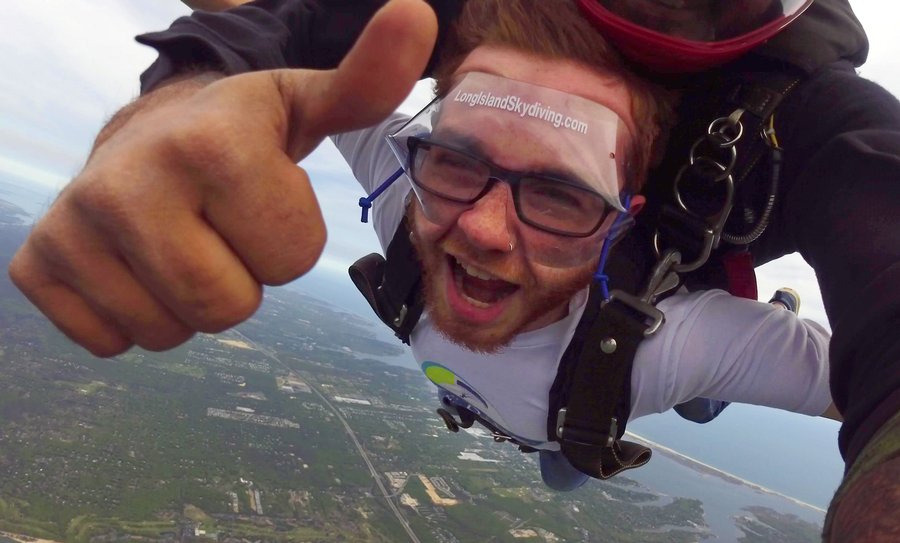
Skydiving weather has to be just right. We have a saying in the skydiving world: it’s better to be on the ground wishing you were in the air, than in the air wishing you were on the ground! At Long Island Skydiving Center, safety is our top priority. So, if you hear us announce we are on a weather hold, please know we have your best interest in mind.
Categories:
You May Be Interested In:
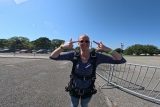
Skydiving Anxiety- Here’s How You Can Prepare
2 months ago by Long Island Skydiving Center
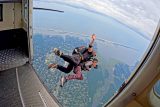
Does Skydiving Feel Like Falling?
2 months ago by Long Island Skydiving Center
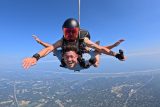
Is Skydiving Safe?
3 months ago by Long Island Skydiving Center
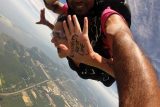
What To Write On Your Hands When Skydiving – Slogans, Hashtags & Captions
4 months ago by Long Island Skydiving Center
